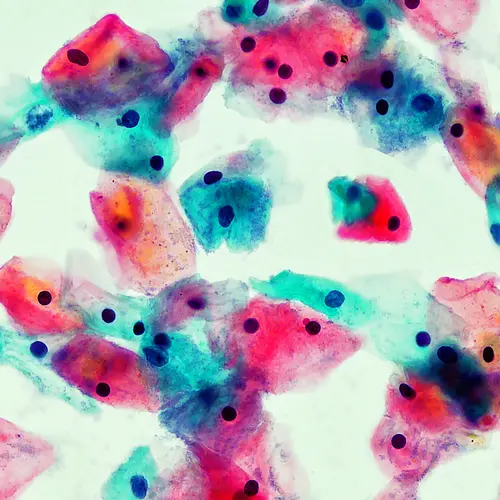allogeneic ("allo"): Stem cell transplantation using cells donated by another person.
anemia: A condition caused by a lack of red blood cells, the cells that transport oxygen to the body's tissues.
antibodies: Proteins made by your body that fight off foreign substances.
antigen: A foreign substance, such as a bacteria, virus, or tissue, that does not come from your body.
apheresis: A process in which whole blood is drawn from a donor, the stem cells are then harvested, and the other blood products are returned to the donor.
autologous: Stem cell transplantation using your own stem cells.
bone marrow: The spongy part of some bones, where blood cells develop from immature marrow cells called stem cells.
bone marrow transplant (BMT): A transplant containing all three types of blood cells that develop in the bone marrow: red cells, white cells, and platelets. (Stem cell transplants only use the immature stem cells from the circulating blood.)
cord blood transplant: Stem cell transplant using cells collected from the umbilical cord and placenta following the birth of healthy newborns.
conditioning (cytotoxic or myeloablative) treatment: High-dose chemotherapy and/or radiation given before a stem cell transplant.
embryonic stem cells: Immature cells from umbilical cord blood that can develop into many types of cells, including blood cells.
granulocyte colony-stimulating factor drugs: Growth factor medicines given to draw stem cells from the bone marrow into the bloodstream.
graft (autograft or allograft): The new blood-producing cells that develop after a successful stem cell transplant.
graft-versus-host disease: A condition in which donor cells think the recipient's cells are foreign and attack them.
graft-versus-tumor effect (GVT): The good response that happens when the donor cells attack any of the recipient's cancer cells that may remain after chemotherapy.
growth factor: Medicines that boost the numbers of infection-fighting white blood cells.
harvesting: The process of collecting stem cells.
hematopoietic stem cells: Immature blood cells or blood-forming stem cells.
hematopoiesis: The process by which the body makes red blood cells.
human leukocyte antigens (HLA): Proteins found on the surface of white blood cells and tissues. A tissue-typing test shows how many HLA matches the recipient has in common with a donor.
immune system: A network of cells, tissues, and organs that protects your body from disease and infection.
infusion: Delivery of liquid medicine or treatment through a vein.
matched unrelated donor (MUD): A donor who is not a blood relative, but who has a complete HLA match to the patient. These donors are often found through bone marrow registries.
monoclonal antibodies: Molecules made in a laboratory, engineered to attach to your cancer cells so they can be seen as foreign and attacked by your immune system.
mucositis:Mouth sores that result when chemotherapy destroys the mucosal cells that line the mouth and intestinal tract.
peripheral blood stem cells (PBSC): The small number of stem cells that make their way from the bone marrow to the circulating blood.
platelets: Cells that prevent or stop bleeding.
port catheter: A tube surgically placed in your chest near your neck through which to give chemotherapy and receive your stem cell infusion. It may also be used to draw blood. An indwelling catheter is more commonly used for catheters in the bladder.
purging: The process of separating cancer cells from bone marrow or stem cells.
red blood cells (erythrocytes): Cells that carry oxygen.
reduced intensity (non-myeloablative or "mini-") transplant: A conditioning process in which lower doses of chemotherapy and/or radiation -- or none at all -- are given prior to stem cell transplant; often used with slow-growing cancers or for older or sicker people.
remission: A period of time when the cancer is not active and you have no symptoms.
stem cells: Immature cells that develop into white and red blood cells and platelets. Most live in the bone marrow, but some (peripheral stem cells) are in the bloodstream.
syngeneic: Stem cell transplant using cells from an identical twin.
tandem (double autologous) transplants: A process in which you have two stem cell transplants with your own cells, done about three to six months apart, to increase chances of success.
tissue typing (HLA typing): A test to see how many antigens match on your cells and your donor's cells. The closer the match, the lower the chance that your immune system will fight the new cells.
white blood cells (leukocytes): Cells that are part of the body's immune system, which fights disease and infection.
